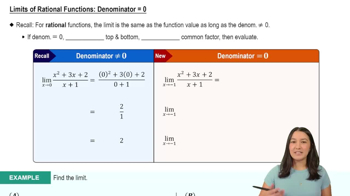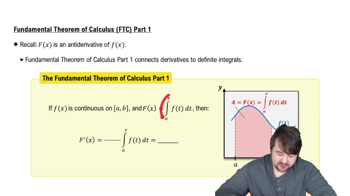Let f(x) =x^2−2x+3.
a. For ε=0.25, find the largest value of δ>0 satisfying the statement
|f(x)−2|<ε whenever 0<|x−1|<δ.
 Verified step by step guidance
Verified step by step guidance Verified video answer for a similar problem:
Verified video answer for a similar problem:



 6:47m
6:47mMaster Finding Limits Numerically and Graphically with a bite sized video explanation from Patrick
Start learning